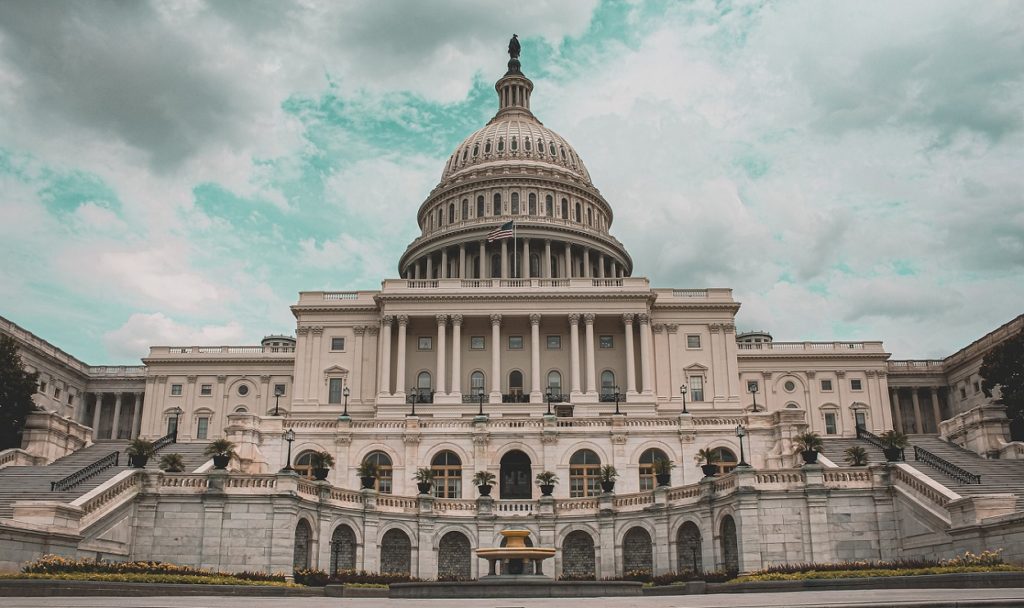
The Inflation Reduction Act (IRA), which includes US$369 billion in energy security and climate change programmes over the next 10 years, passed in the US Senate on Sunday, paving the way for its movement to the House of Representatives and subsequent signing by President Joe Biden.
The Act passed by a 51-50 vote in the evenly split chamber, with Vice President Kamala Harris casting the tie-breaking vote.
Unlock unlimited access for 12 whole months of distinctive global analysis
Photovoltaics International is now included.
- Regular insight and analysis of the industry’s biggest developments
- In-depth interviews with the industry’s leading figures
- Unlimited digital access to the PV Tech Power journal catalogue
- Unlimited digital access to the Photovoltaics International journal catalogue
- Access to more than 1,000 technical papers
- Discounts on Solar Media’s portfolio of events, in-person and virtual
Or continue reading this article for free
The Bill’s movement to the House, where is it expected to pass given a Democrat majority, is likely to take place at the end of the week as lawmakers look to reconvene despite the summer recess.
Senate Majority Leader Chuck Schumer called the legislation “the boldest clean energy package in American history”, while Biden said he looked forward to signing the Act into law.
As part of the IRA, US$30 billion will be earmarked for production tax credits (PTC) to accelerate US clean energy manufacturing, while an additional US$10 billion of investment tax credits (ITC) will be provided to build clean technology manufacturing facilities, such as factories that make solar modules and other clean technologies.
As expected, the passing was warmly welcomed by the US solar industry and climate advocates, despite it being significantly smaller than the planned Build Back Better act because of compromises struck with obstructive Democratic Senator Joe Manchin.
“This bill is going to quickly help the US become a major manufacturer of solar and other clean energy technologies, while enabling a more rapid transition to a low carbon future,” said Scott Moskowitz, head of market strategy and public affairs at Qcells America, whose parent company Hanwha Solution last week said it would consider upping its investment in US solar manufacturing if the act passes.
“Companies are ready to invest billions of dollars to leverage this policy to improve our supply chains, lower energy costs, and address the climate crisis,” Moskowitz added.
Solar Energy Industries Association (SEIA) president and CEO, Abigail Ross Harper, said the “long-term incentives for clean energy deployment and manufacturing” in the Act meant “the solar and storage industry can create hundreds of thousands of new jobs and get to work building out the next era of American energy leadership.”
“The Inflation Reduction Act is ground-breaking for our industry and exactly what we need to accelerate the clean energy transition,” said Meghan Nutting, executive VP for Government and Regulatory Affairs at residential solar installer Sunnova, adding the Act would present opportunities to proliferate the adoption of distributed energy resources like solar and storage.
Solar tracker manufacturer Nextracker said it “strongly supports the Inflation Reduction Act, which will immediately increase hiring at our US factories”. Its CEO and founder Dan Shugar said, “energy independence and decoupling from overseas inflation factors has never been more important. We urge the House to quickly pass this landmark legislation for President Biden’s signature.”
Last week, PV Tech Premium reported that the IRA was the US’ “best chance to build a domestic manufacturing base” that is crucial for it to meet its decarbonisation targets amid a PV module shortage in the country.
Under the proposals, the solar manufacturing tax credits are as follows:
- Modules would receive US$0.07, multiplied by the capacity of the module (on a per direct current watt basis)
- Thin-film or crystalline PV cells would get US$0.04, multiplied by the cell’s capacity (on a per direct current watt basis)
- Wafers would secure US$12 per square metre
- Polymeric backsheets would receive US$0.40 per square metre
- Solar-grade polysilicon would get US$3 per kilogramme
Those credits are broadly in line with manufacturing support included in the Solar Energy Manufacturing for America (SEMA) Act, first proposed by Senator Jon Ossoff last year that was broadly welcomed by much of the US solar industry, although it got less traction in government at the time.
Pol Lezcano, BloombergNEF’s lead analyst for North American Solar, told PV Tech Premium that “with the manufacturing incentives in place, the US could reach its full polysilicon production potential of approximately 21GW in less than two years, and make 10GW worth of modules per year starting in 2025.”







